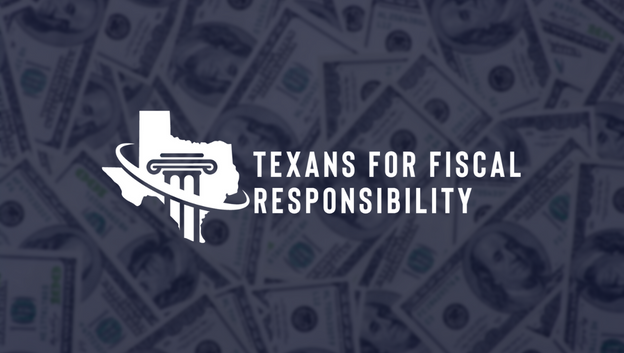
While the Texas economy continues to be one of the best in the country, the state must not rest on its laurels. This is because other states are becoming more competitive, and recent efforts by the Texas Legislature have headed Texas in a more progressive, California-style direction. But let’s see what the data tell us about the Lone Star State.
- Texas had the 9th largest in-migration from other states in 2023.
- The U.S. Census Bureau recently released population data for each state. Texas’ population increased by 473,453 people to 30.5 million in 2023. The population is up by 10 million people or 50% since 2000.
- The Census also provides net domestic migration, which notes how many people enter or exit the Lone Star State State from other states. Figure 1 illustrates how Texas had the ninth largest net in-migration of people in the country, with a net gain of 186,767 people from other states for a 0.9% increase in net in-migration.
Figure 1: Texas had the Ninth Best Percent Increase in Net Domestic Migration in 2023
Source: Tax Foundation
- Texas has been a leader for years among states where people are moving to and away from big-government, progressive states like California, New York, and Illinois. In fact, Texas had a total net in-migration of 656,220 people from other states over the last four years. This is a terrific trend for the state as families come together, people with higher skills and incomes move here, and the economy flourishes from more entrepreneurs. Of course, these increases in the population bring challenges to the labor market, transportation, health care, education, and other sectors. But these challenges are more reason for state and local governments to get out of the way.
- The U.S. Bureau of Labor Statistics provides Texas’ labor market data to examine how people are doing across the state.
- Texas’ labor market continues to improve but remains well below where it was in 1999.
- Since February 2020, before the COVID-19 lockdowns, the working-age population has increased by 1.7 million to 23.7 million. The labor force has increased by 1.2 million to 15.2 million people, which has increased in 40 of the last 44 months.
- This increase in the labor force has resulted in a participation rate of 64.1% in December 2023, near the high before the lockdowns but still well below the rate of 69% in 1999.
- The employment-population ratio is now 61.6%, the highest rate since 2009, before the Great Recession, but is also well below the ratio of 65.7% in 1999.
- The unemployment rate edged down to 4.0%, remaining above the U.S. average rate of 3.7%, but this is a relatively strong rate in Texas as the labor force continues to increase, unlike many other states.
- Texas’ employment has been up for 43 of the last 44 months.
- The establishment survey shows that nonfarm employment has increased by 1.1 million jobs to 14.1 million in December 2023 since pre-COVID lockdowns, making it the fourth-best jobs recovery since then.
- The household survey shows that employment is up by 1.1 million to 14.6 million jobs since February 2020.
- In December, nonfarm employment increased by 19,100 jobs (6th largest percentage increase of 0.1% of any state, as 19 states had declines or essentially no growth), now up in 43 of the last 44 months.
- The household survey also showed employment increased but by 18,375 jobs in December, increasing now for 43 of the last 44 months.
- Texas’ workers gain jobs in most industries but some have lost purchasing power.
- Nonfarm jobs were up by 369,600 over the last year for a 2.7% increase (4th fastest). Jobs in the private sector rose by 314,800 jobs last month to 12.0 million (85% of total jobs), and government employment increased by 2,200 jobs to 2.1 million (15% of total jobs).
- Figure 2 illustrates how most major industries increased employment in 2023 but a few industries had increases in average weekly earnings that did not keep up with CPI inflation of 3.2%.
Figure 2. Texas’ Labor Market by Industry
Source: U.S. Bureau of Labor Statistics
- Economic growth has picked up, but personal income lags the U.S. average.
- Figure 3 illustrates the recent report by the Bureau of Economic Analysis (BEA) that annualized growth in real GDP in Texas was +7.7 in Q3:2023 (above the 4.9% U.S. average) ranked 2nd best in the country to $2.1 trillion.
- The BEA also reported personal income growth for Texas grew at an annualized pace of +5.2% (ranked 1st) to $2.0 trillion in Q3:2023 (above the +3.5% U.S. average).
Figure 3: Real Gross Domestic Product by State in Q3:2023
Source: U.S. Bureau of Economic Analysis
Bottom Line:
- Free-market capitalism is the best path to let people prosper, as it is the best economic institution that supports jobs and entrepreneurship for more people to earn a living, gain skills, and build social capital.
- As Texans face an affordability crisis from high inflation, high property taxes, and an uncertain future with the U.S. economy likely in a deepening recession, the Legislature provided some tax relief but not nearly enough because of excessive spending.
- Other states are cutting, flattening, and phasing out taxes, passing responsible budgets, and passing school choice, so Texas should have made bold reforms to support more opportunities to let people prosper, mitigate the affordability crisis, and withstand destructive policies out of D.C.
These Pro-Growth Opportunities Include:
- Spend Less: Lower state government spending and pass sustainable state and local spending limits.
- Tax Less: Start eliminating local property taxes with historic surpluses at the state level to buy down school district M&O property taxes and at the local level by using their own surpluses to buy down their own property tax rates.
- Regulate Less: Improve workforce development, remove barriers to work, reduce occupational licensing, reform safety nets, and enact universal school choice.
Strengthening the Texas Model will help Texans better resist D.C.’s overreach, be more competitive with other states, and, more importantly, flourish more for generations to come. Let’s start today!
Texans for Fiscal Responsibility relies on the support of private donors across the Lone Star State in order to promote fiscal responsibility and pro-taxpayer government in Texas. Please consider supporting our efforts! Thank you!
Get The Fiscal Note, our free weekly roll-up on all the current events that could impact your wallet. Subscribe today!




